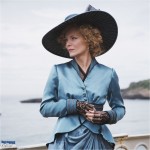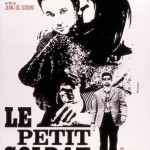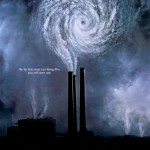In Part I of this essay I opined that post-Romantic ideology in American and British literature had led to a general tendency to locate goodness in the individual and evil in institutions (that alternately tyrannize or render complacent those individuals) has tended to render fuzzy our understanding of anarchy as a political philosophy. One way that fuzziness is manifested is in the way that anarchy gets conflated with revolutionary violence in our popular media. Whereas Matthew Arnold posited anarchy and tyranny as equally destructive poles to be striven against, twentieth century anti-(or is it Romantic?) heroes use violence to raze the foundations of a rotting and corrupting society to either allow a new world order to emerge or remove the constraints against violence placed against vigilantes or independent forces of power who are alone able to stand against the purely evil.

The typical example of such a hero would be Mad Max, who doesn’t usher in the apocalyptic era but who nevertheless finds his true calling operating outside a civil and legal structure. (Max was a policeman, initially, and it is no coincidence that when he is a representative of law and order, he is impotent to prevent thugs from killing his family; once he embraces the free-for-all, his uber self is able to protect the innocent.) Batman is another example of how an anarchic force is often viewed as necessary to operate outside the law.
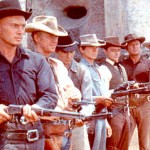
Films like My Bodyguard or The Magnificent Seven, for all their differing intended audiences are held together by belief in the ability, nay the necessity, or harnessing mercenary violence. Violence is viewed as bad on an institutional level because institutions are evil, but individuals who are good are thought capable of wielding power, even violence, to good ends. Anarchy becomes a positive force, a secular, non-socialist version of the Marxist myth of the upheaval that precedes the implementation of a just society (rather than spiralling into mob rule and the guillotine).
The passionate belief in anarchic violence–as a means of reform or revolt, as an instrument to leverage change, as the only real way of opposing tyranny–is so ubiquitous, that when one sees or hears it questioned one is simultaneously stunned (how can that be?) and refreshed (of course!)
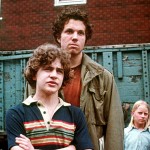
I had such a response the first time I read “What is Anarchy?” The first section of the first chapter of Jacques Ellul’s Anarchy and Christianity, “What is Anarchy” is filled with the sorts of statements that typify Ellul’s keen penetration and sociological insight: “By anarchy I mean first an absolute rejection of violence. Hence I cannot accept either nihilists or anarchists who choose violence as a means of action” (11).
Ellul claims to understand the violent impulse, but says, somewhat wryly: “I recall passing the Paris Bourse some twenty years ago and saying to myself that a bomb ought to be placed under that building. It would not destroy capitalism but it would serve as a symbol and a warning. Not knowing anyone who could make a bomb, I took no action!” (11). That line reminds me of V telling Evie Hammond that a building is a symbol and that by blowing up a building he hopes to give the people hope. “Violence can be used for good,” he insists.
But it also reminds me of Brad Dourif as the Younger Brother in Ragtime saying “I can make bombs” to a group of angry Negroes. In that moment Coalhouse Walker, Jr. thinks it may be possible to weild violence, or the potential of violence, to opposed and overcome oppression, racism, and tyranny that manifests itself in unjust violence. It ends, though, with a sickened and repentant Coalhouse trapped in the recognition the anarchic strain of violence can only be used to strike out not to build up.
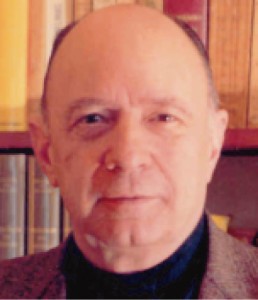
Ellul divides the violent strain of anarchy into three categories, each of which he rejects. The first he associates with “the Russian nihilists” and is described as systematic and sustained violence aginst those who wield power in the hope that eventually the public sees what happens to those in power and refuse (through fear or self preservation) to take up the mantle of power once it is vacated. Ellul says this is the strain of violence closest to the strategy of modern terrorists but that “this line of thinking greatly underestimates the ability of powerful organisms, as well as society, to resist and react” (12).
I think Ellul is right here so far as he goes, but I would also suggest that this form of anti-authoritarian violence also underestimates the desire of the selfish human heart for the potential rewards offered by power buttressed by institutional weight.
The pop cultural examples we have of the futility of this means of trying to make power unpalatable are usually inverted–one thinks of chaotic anarchy that is created in the wake of a failed assassination attempt against mob boss Vito Corleone in Francis Ford Coppola’s The Godfather. Strong hierarchical power is the most stable form of conflict and hence the violence is not eliminated but minimalized. The chaos that ensues in the vacuum created by the absense of Don Corleone causes more and greater violence as the opportunity to assume the trappings of power previously thought to be inaccessible rise to the surface.
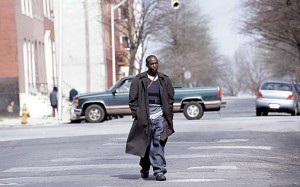
Or, if you prefer a more recent example, the successful prosecution of Avon Barksdale in HBO’s The Wire, far from acting as a deterring sign to those who would wield power only serves to create a temporary anarchy in which those who rise to power are not those most opposed to tyranny but those most willing to be tyrannical. If one thinks about anarchy in connection with The Wire though, it is hard not to think of Omar, who is both the agent/creator and symbol of anarchy. Omar is the post-modern Mad Max (even the photos look similar, don’t they?) the sort of anti-anti-hero. Like the conventional anti-hero, he operates outside any institution or structure, but unlike the vigilante anti-hero, he has no ulterior or greater goal or even sense of value. He thrives in chaos, but (ironically) he needs some forms of structure from which to leech. A true anarchic society would mean there were no stashes but individual stashes and he could not depend on the clashes between greater collected forces to provide cover (in various forms) for his own exploits.
Omar–or at least Omar’s popularity amongst middle and upper class white viewers who make him a kind of cult hero–is more closely aligned to the second type of anarchic violence that Ellul describes: “Then there is despair when the solidity of the system is seen, when impotence is felt face-to-face with an increasingly conformist society, or an increasingly powerful administration, or an invincible economic system (who can arrest multinationals?), and violence is a kind of cry of despair, an ultimate act by which an effort is made to give public expression to one’s disagreement and hatred of oppression” (12). This sense of despair at the “solidity” of the system is expressed most perfectly in the rightly famous chess scene in Season 1 in which the younger Barksdale explains chess to his henchmen, using the drug trade as a metaphor to explain the pieces. Bodie may insist that a pawn can become the king, but the reality is that the rules–the way the game is structured–prevents that from ever happening regardless of how much skill or cunning he exercises.
The anger that arises from one’s impotence in the face of systems too large and too enmeshed is certainly shared by viewers–even those who know they are complicit to some degree in creating and maintaining the solidity of such systems, and hence Omar’s violent rejection not of his place within society but of society itself (to what chess piece is he an analogue?) is both refreshing and–oddly–encouraging to the audience. Perhaps environment is not all. Perhaps by rejecting all, one can be a law unto oneself and live only for oneself.
I think the despair of the audience is what fuels the romantic idolatry of Omar, though I don’t necessarily think his violence is an expression of his own despair. It is mostly tactical, a word which Ellul uses to describe his first objection to violence and aggression. Nonviolence as a movement has been more successful at effecting real and useful change and opposing tyranny than has violent opposition, whether in terrorist/anarchist form or in organized revolutionary form. (I’m reminded of Farah Pahlavi asking Nahid Persson in The Queen and I why so few of the revolutionaries who were socialist or Marxist in philosophy fled to communist states such as Cuba, China, or the Soviet Union when their overthrow of a [what they thought] tyrannical emperor simply created a power vacuum for a more oppressive, violent, and tyranical state.)
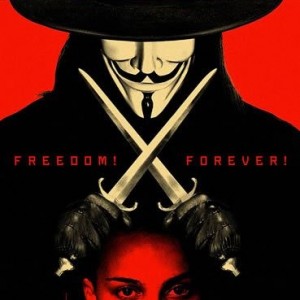
The film that got me starting about Ellul and anarchy, however, was V for Vendetta, and while I’ve said in Part I that I think the political philosophy of that film is ultimately self-contradictory and incoherent, a case might be made that V represent the third strain of anarchic violence that Ellul describes: “Finally, there is the offering of a symbol and a sign, to which I have alluded already. A warning is given that society is more fragile than is supposed and that secret forces are at work to undermine it” (12). V’s violence is less a warning than a sign. It is suppose to rally the people who have been overcome by fear and give them a sign that resistance to tyrannical control and power is not only contemplatable but possible.
Ironically, however, his one disciple is made through the realization of the ultimate futility of violence. Evie discovers that thing which she loves and cares about more than life and is thus able to say no to the perceived threat of death. V, as I’ve said several times already, shows it is possible to strike at and destroy the fascist government, but that is a very different thing from showing that he has anything to put in its place. “People should not be afraid of their government, government should be afraid of its people.” Will the government that is created in the wake of the revolutionary violence be one that is afraid of its people? Will it be one that values life, freedom, liberty, art, anything that would fall under the umbrella of what Matthew Arnold called “sweetness and light”?
Although Ellul starts with a tactical objection to violence–non-violence works better–he ends the section with his philosophical objection, a premise which he will have to develop throughout the book: “Biblically, love is the way, not violence” (13). He does go on to say, however, that “Not using violence against those in power does not mean doing nothing” (13). Just as he articulates in Money & Power that the most effective way of combating the power of money is not by overwhelming it but subverting and perverting it (using it to give rather than to buy and control) so too the suggestion here is that the ultimately more powerful way of combating the power of violence is by non-cooperation rather than by greater violence.
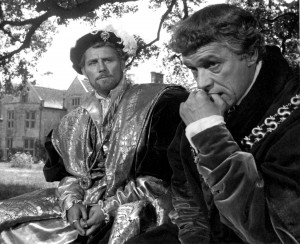
It is the rejection of power–not the rejection of those who wield power but of the allure of the power of violence itself that ultimately creates the sort of anarchy through which tyranny is opposed without necessarily creating the fertile ground for more tyranny. Sir Thomas More destabilizes the government not through the exercise of power but through non-participation and non-cooperation. Josh, the young chess prodigy in Searching for Bobby Fisher refuses to cooperate with a teacher who insists that the success in chess depends on mental and emotional tyranny of those who would oppose him:
–Do you know what it means to have “contempt” for your opponent?
–No.
–It means to hate them. You have to hate them Josh, they hate you.
–But I don’t hate them.
–Well you’d better start.
When Josh offers a contemptible opponent a draw in an attempt to spare him humiliation, he resists not only his opponent’s power but his teacher’s insistence that power can only be met with greater power. In Richard Attenborough’s Gandhi, the eponymous hero drives the colonial tyrants from India not by meeting it with power but by fostering and revealing a state of true anarchy which shows and exploits the limitations of that power. “Because 100,000 Englishmen simply cannot control 350 million Indians, if those Indians refuse to cooperate.”
I’ve tried to argue that the spirit of anarchy in its highest form is less about using violence to create chaos where there once was tyranny than it is about resisting that tyranny by not buying into the methodology and philosophy that creates it. Anarchy is less a state of (non) government than a tool, an opposition not merely to agents of power who have already become tyrannical but to the concept of power itself, especially as it is created and maintained through violence.
Ellul’s book extends far beyond the opening section I have mined, and it is more nuanced and thoughtful than the sort of summary I could provide here could do justice to, so I’ll move toward a conclusion by recommending readers track it down and read it in full. In his conclusion he calls anarchy “a happy counterweight to the conformist flexibility of Christianity” (104). That flexibility is evidenced in the fact that the Christian church has somehow managed to use the same people to be monarchist under monarchies, imperialist under empires, republican under Republics, and socialist under (or in) socialist governments. Paul says to be not conformed to present world, yet that has come to mean for most evanglicals not accepting social ideas or worldviews that run counter to the received and traditional virtues or morals. The notion that political philosophy could be an idea of this present world, that there might not be a right or God ordained one (or that the God-ordained one might not be our own) is, seemingly, anathema.
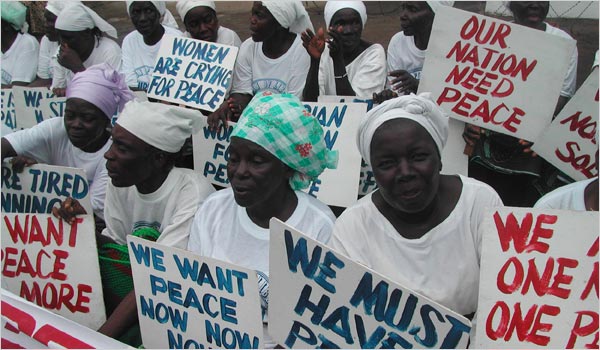
To truly conclude, though, I want to go back to where I started–Matthew Arnold and the problem of opposing tyranny. Arnold feared that anarchy could result from an uneducated, lower class constituency, because the working class is ” pressed by hard, daily compulsion” and has thus become the ““very center and stronghold of our national idea, that it man’s ideal right and felicity to do as he likes.” This commitment to personal freedom, he feared,meant that the working classes were less likely to cultivate and practice a state of “disinterestedness”–by which he meant not boredom but rather the capacity to act against one’s self-interest for the benefit of something or someone else. Were Arnold alive today, I’d like to watch Pray the Devil Back to Hell with him. The chaos created in Liberia was a double dose of tyranny, and it was opposed and defeated not by a greater, external, controlling exercise of power and force, but by a populace largely without formal, institutional power. The anarchy created by revolutionary violence was simply a larger pool for unspeakable cruelty and oppression. The personal anarchy practiced by those who refused to cooperate with an institutional government (or revolutionary counter-force) resting on violence as a means of control led to results those of us inculcated with Matthew Arnold’s view of the world and, especially, of the least of these who inhabit it, would be simply flabbergasted.
I wonder how V for Vendetta played in Liberia?
Ellul, Jacques. Anarchy and Christianity. 1988. Trans. Geoffrey W. Bromiley. Grand Rapids MI: Eerdmans, 1991.

